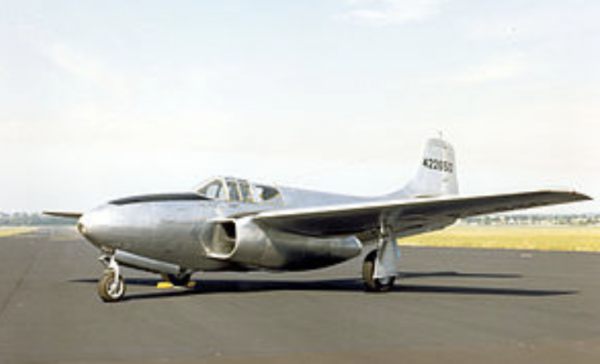Ann Baumgartner was the First Woman to pilot a jet airplane. Airplanes enchanted Baumgartner from the day Amelia Earhart, the First Woman to fly solo across the Atlantic Ocean, visited her grade school class. She and her father would go to the airport and watch mail planes landing at night, but it was not until after college that she learned to fly.
First Ann Baumgartner attended Smith College and graduated with a pre-med major. She went to work for Eastern Airlines in their public relations department and made time to learn to fly. When the Women Airforce Service Pilots (WASP) was formed during World War II, Baumgartner joined.

Her first assignment was as a tow target pilot at Camp Davis in North Carolina. The women pilots dragged targets behind their planes so that men on the ground could practice hitting a moving target with live ammunition. She flew five different aircraft during this time.
She was then assigned to Wright Field in Ohio where she used her undergraduate degree testing aeromedical equipment. It was there she applied for assignment to the Flight Test Division. During that time she tested airplanes, and became the First Woman to pilot a jet plane, the Bell YP-59A. In all Baumgartner flew almost two dozen different planes.
Ann Baumgartner had married Major William Carl, an engineer and aircraft designer, during the last year of the war. They had two children but, unlike many women of her generation, Baumgartner continued to work. She did not, however, work in the military. When the war ended, women were removed from their posts and the temporary branches of the services created for women were shuttered. Instead, she was a flight instructor for United Airlines and wrote for The New York Times and other publications about science. She wrote more than 2,000 columns and articles.
Baumgartner died one year after her husband, in 2008 at the age of 90.
More About Women in the Service
After World War II, Baumgartner could no longer serve because the women’s branches of the service were disbanded. It was not until 1974 that the Navy accepted women in pilot training and not until 1977 that the Air Force did the same. If the women’s branches had not been discontinued, however, Baumgartner still could not have served, as women were immediately dismissed from service when they became pregnant. Although there were some waivers for pregnant woman to serve as early as 1971, the policy did not change for all branches and all women until 1975.
A Reflection
When the first astronauts were selected, there was a group of women who completed the same physical tests the men had taken. In some instances, they exceeded the performance of the men. However, it was decided that astronauts must be qualified test pilots. Because women could not fly in the military, where planes were tested, none of the potential women astronauts met this qualification. I wondered why Ann Baumgartner was not considered. Then I calculated her age; she was 41 at the time, just over the age requirement. All the men selected were in the thirties. Perhaps that is the reason. Or was it her gender that disqualified her? Sally Ride was the First Woman Astronaut in the United States. She joined NASA in 1978 and flew to space in 1983. What if Ann Baumgartner had been born twenty or thirty years later?

